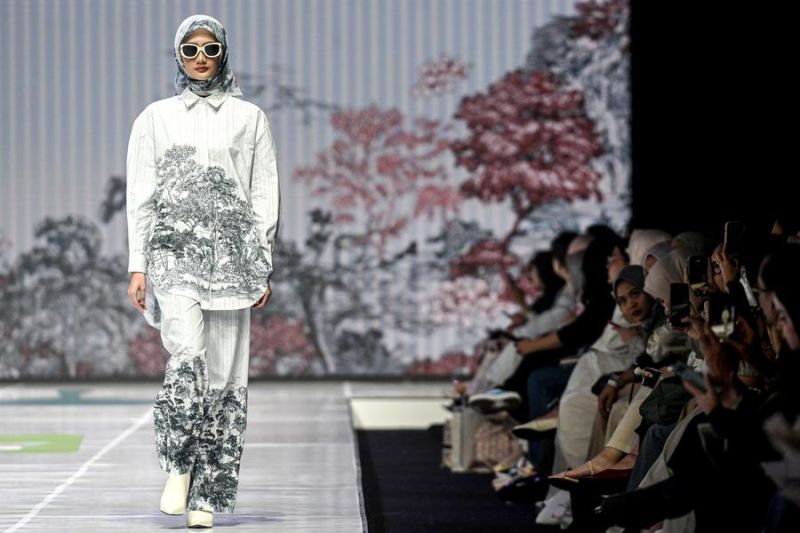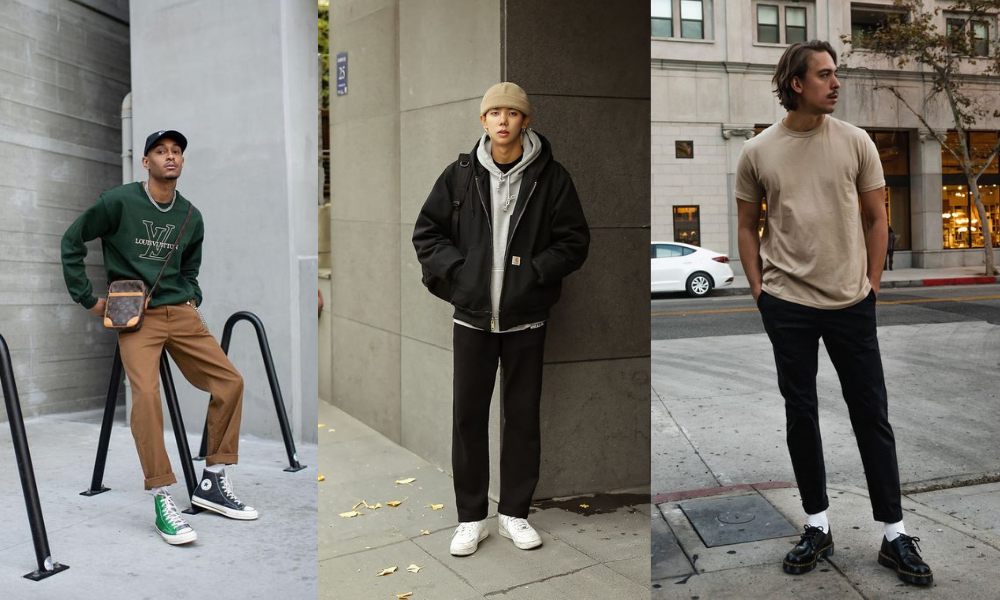Social media has fundamentally transformed the way fashion trends emerge, evolve, and spread in the modern world. From Instagram influencers to TikTok fashion challenges, platforms like these have democratized fashion and accelerated the pace at which trends are adopted globally. Let’s explore how social media is reshaping the fashion industry and influencing modern trends.
1. The Rise of Social Media in Fashion
- What: Social media platforms like Instagram, TikTok, YouTube, and Pinterest have become essential tools for discovering and sharing fashion trends. These platforms offer a space for users to showcase personal style, follow fashion influencers, and engage with brands in ways that were previously unimaginable.
- Who: Fashion influencers, bloggers, celebrities, and everyday users now have the ability to set trends and influence what people wear. Brands also use social media to launch collections, run marketing campaigns, and directly interact with their customers.
- Why: Social media provides immediate and widespread access to new styles and trends, allowing people to quickly adopt looks they see on their feeds. This instant visibility, combined with constant updates and personalized content, has accelerated the fashion cycle.

2. Fashion Influencers and Their Impact
- Micro and Macro Influencers: Fashion influencers range from celebrities with millions of followers to micro-influencers who have smaller, more engaged audiences. Both play critical roles in shaping modern fashion trends. Influencers often collaborate with brands to promote new collections, making them central figures in the fashion marketing ecosystem.
- Authenticity and Relatability: Unlike traditional fashion icons who may seem distant or untouchable, influencers are seen as more relatable and authentic. They showcase styles in everyday settings, making them more accessible to the average consumer. Followers often see influencers as trusted sources of fashion inspiration, which makes their recommendations highly impactful.
- The “Instagram Look”: Platforms like Instagram have also given rise to specific fashion aesthetics, often referred to as the “Instagram look.” This can include styles that are photogenic, aspirational, and often curated for visual impact, such as oversized sunglasses, minimalist streetwear, or perfectly coordinated outfits that align with the platform’s visual nature.
3. The Speed of Trend Creation
Social media has greatly accelerated the fashion cycle, with trends emerging and evolving faster than ever before:
- Instant Trend Spread: In the past, fashion trends were often dictated by runway shows and high-end fashion magazines, with a significant delay before they reached mainstream consumers. Now, a trend can go viral in a matter of hours on social media, with millions of people adopting it almost instantly.
- Hashtags and Challenges: TikTok, in particular, has introduced fashion challenges that can go viral, leading to trends like the “#OOTD (Outfit of the Day)” or the “e-girl” and “e-boy” aesthetics. These challenges encourage users to participate and create their own versions of a style, spreading trends quickly across the platform.
- Fashion Memes and Virality: Social media has given rise to fashion memes—short-lived, playful trends that spread virally. Whether it’s the resurgence of Y2K fashion or the sudden popularity of “cottagecore,” social media allows users to experiment with trends that might not have been mainstream just a few years ago.
4. Social Media’s Role in Democratizing Fashion
- Inclusivity and Representation: Social media has made fashion more inclusive. Traditional fashion media often prioritized certain body types, races, and aesthetics, but social media has opened up space for diverse voices and styles. Body-positive influencers, gender-fluid fashion bloggers, and activists promoting sustainable fashion have all found platforms to share their perspectives and influence trends.
- User-Generated Content: Anyone with a smartphone can become a part of the fashion conversation. This democratization of fashion allows regular users to contribute to trend creation. Social media platforms are full of user-generated content where people showcase their outfits, experiment with styles, and inspire others.
- Emerging Designers and Small Brands: Social media has also helped small, independent designers and niche fashion brands gain visibility. In the past, breaking into the fashion industry required substantial financial backing or connections. Today, platforms like Instagram and TikTok allow emerging designers to reach global audiences and sell directly to consumers without needing a physical store or traditional marketing channels.

5. Fashion Brands and Social Media Marketing
- Direct-to-Consumer (DTC) Marketing: Many fashion brands now operate primarily through social media, bypassing traditional retail models. Direct-to-consumer brands like Fashion Nova and Glossier have built entire empires through Instagram marketing and influencer partnerships, reaching their target audiences without relying on brick-and-mortar stores.
- Engagement and Interaction: Social media allows for real-time engagement between brands and their customers. Brands can gain instant feedback on new collections, see which items resonate with their audience, and interact through comments, likes, and direct messages. This dynamic relationship helps brands stay relevant and adapt to customer preferences quickly.
- Paid Partnerships and Sponsored Content: Brands collaborate with influencers to promote their products, with sponsored content becoming a key part of social media marketing strategies. These collaborations can drive huge traffic and sales, as influencers’ followers are often loyal and influenced by their recommendations.
6. Social Media’s Influence on Consumer Behavior
- FOMO and Fast Fashion: Social media creates a constant stream of new content, leading to a phenomenon called “Fear of Missing Out” (FOMO). Consumers often feel the pressure to keep up with the latest trends, which can drive them to purchase new clothing frequently. This can contribute to the fast fashion industry, where trends are adopted quickly but are also discarded just as fast.
- Fashion Hauls and Consumption: Another significant trend fueled by social media is the fashion haul, where influencers and users showcase large quantities of clothing they’ve purchased. This culture of consumption promotes the idea of frequently buying new clothes to stay on trend, which can have negative environmental consequences.
7. The Intersection of Fashion and Technology on Social Media
- Virtual Fashion Shows: With the rise of social media, especially during the COVID-19 pandemic, fashion brands have turned to virtual fashion shows to present their collections. These digital events are streamed live on platforms like Instagram and YouTube, allowing fashion enthusiasts worldwide to participate in what was once an exclusive industry event.
- Augmented Reality (AR) and Virtual Try-Ons: Social media apps like Instagram and Snapchat now offer augmented reality (AR) filters that allow users to “try on” virtual clothing and accessories. This innovation is enhancing the online shopping experience and allowing consumers to engage with fashion in new, interactive ways.
8. Challenges and Criticism
While social media has revolutionized the fashion industry in many positive ways, it is not without its challenges:
- Overconsumption: The pressure to constantly update one’s wardrobe to keep up with social media trends has fueled overconsumption and contributed to environmental issues. The fast-paced nature of social media trends often leads to increased demand for fast fashion, which is notorious for its environmental and ethical shortcomings.
- Body Image Issues: Social media has also been criticized for promoting unrealistic beauty and fashion standards. The pressure to look perfect in every post can contribute to body image issues and mental health struggles, especially among young people.
- Sustainability Concerns: While there is a growing movement for sustainability in fashion, social media’s emphasis on fast fashion and constant newness can make it difficult for consumers to balance trendiness with sustainability.
9. Social Media as a Fashion Incubator
- Niche Aesthetics: Social media has become a breeding ground for niche fashion subcultures and aesthetics. From the “cottagecore” movement to “dark academia” or “e-girl” styles, these unique fashion communities have thrived on platforms like TikTok and Instagram. These micro-trends can gain significant traction, influencing mainstream fashion in unexpected ways.
- Collaboration and Community: Social media has also fostered a sense of community in the fashion world. Users can engage with others who share similar styles, participate in fashion discussions, and collaborate on content. This sense of collaboration, especially through platforms like Pinterest or Polyvore, has encouraged creativity and experimentation in fashion.

10. The Future of Social Media in Fashion
As social media continues to evolve, so too will its influence on fashion:
- Shoppable Content: The integration of e-commerce features into social media platforms, such as Instagram Shopping or TikTok Shop, will further blur the lines between content and commerce. Users can now shop for clothes directly from their feeds, making the process of discovering and buying fashion more seamless than ever.
- AI and Personalization: Advances in artificial intelligence (AI) will enable more personalized fashion experiences on social media. Algorithms will become better at curating content that aligns with users’ individual tastes, leading to more targeted fashion recommendations.
- The Role of Creators: The role of fashion influencers and creators is likely to grow as brands increasingly rely on social media personalities to connect with their audiences. Influencers may even begin to design their own fashion lines, further merging the worlds of content creation and fashion design.
Conclusion: Social Media’s Lasting Impact on Fashion
Social media has become an integral part of the modern fashion landscape. It has democratized fashion, allowing more people to participate in trend creation and shaping the industry from the bottom up. While it has brought challenges like overconsumption and unrealistic standards, it has also fostered creativity, inclusivity, and innovation. As social media continues to evolve, its influence on fashion will only grow, cementing its role as a driving force behind modern trends.